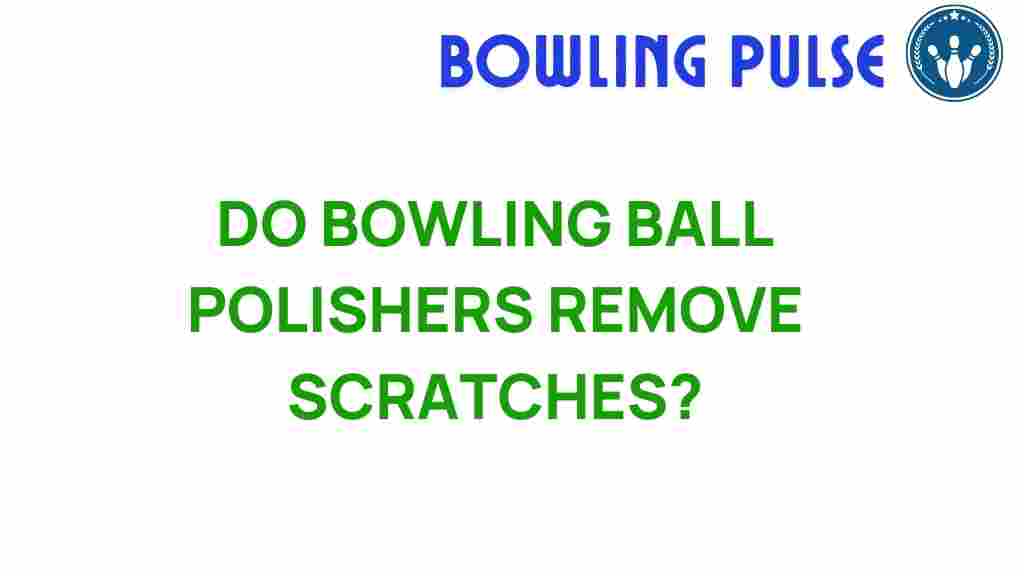Do Bowling Ball Polishers Really Remove Scratches?
If you’re a regular bowler, maintaining your bowling equipment is crucial for optimal performance. One of the most common questions among bowlers is whether bowling ball polishers can effectively remove scratches. In this article, we will dive deep into the truth behind scratch removal, the effectiveness of polishers, and essential techniques for bowling maintenance.
The Importance of Bowling Ball Maintenance
Regular maintenance of your bowling ball is essential for several reasons:
- Performance Enhancement: A well-maintained ball performs better on the lanes.
- Longevity: Proper care extends the life of your bowling equipment.
- Consistency: Maintaining a smooth surface allows for more predictable rolls and hooks.
With these factors in mind, let’s explore the role of bowling ball polishers in maintaining your ball’s surface and removing scratches.
Understanding Bowling Ball Polishers
Bowling ball polishers are devices designed to clean and polish the surface of bowling balls. They can be beneficial in restoring the ball’s sheen and smoothness, which can impact performance. However, their effectiveness in scratch removal can vary based on several factors:
- The severity of the scratches
- The type of bowling ball material
- The specific polisher used
How Do Bowling Ball Polishers Work?
Bowling ball polishers work by using a combination of mechanical action and polishing compounds. Here’s a step-by-step process of how they function:
Step 1: Preparation
Before using a polisher, it’s essential to prepare your bowling ball:
- Clean the ball with a microfiber cloth to remove any dust or oil.
- Inspect the ball for scratches and determine their depth.
Step 2: Setting Up the Polisher
Most polishers come with specific instructions. Typically, you need to:
- Place the bowling ball securely in the polisher.
- Choose the appropriate polishing compound for your ball type.
Step 3: Polishing Process
Engage the polisher and let it run for the recommended time. During this process, the machine will:
- Apply the polishing compound to the surface of the ball.
- Buff the ball, which can help reduce the visibility of scratches.
Step 4: Finishing Touches
After polishing, it’s crucial to:
- Wipe the ball with a clean cloth to remove any leftover compound.
- Inspect the surface again to assess the effectiveness of the polish.
Can Polishers Remove All Types of Scratches?
While bowling ball polishers can help with minor scratches, they are not a one-size-fits-all solution. The effectiveness of scratch removal depends on:
Minor Scratches
For light surface scratches, polishers can be quite effective. The polishing compound works to smooth out the imperfections, restoring the ball’s finish.
Moderate to Deep Scratches
For deeper scratches, polishers may not fully restore the ball’s surface. In these cases, additional methods may be necessary:
- Hand sanding with fine-grit sandpaper
- Professional resurfacing services
Bowling Ball Polishers: Effectiveness and Limitations
While polishers can enhance the surface of your bowling ball, it’s important to understand their limitations:
Advantages of Using Polishers
- Time-Saving: Using a polisher is typically faster than hand polishing.
- Consistency: Provides a uniform finish across the surface.
- Ease of Use: Many models are user-friendly and designed for home use.
Limitations of Polishers
- Not a Complete Solution: Polishers may not remove all scratches, especially deep ones.
- Potential for Damage: Overuse can lead to damage or excessive wear on specific ball types.
- Cost: High-quality polishers can be an investment.
Bowling Ball Care Tips
To maintain your bowling ball effectively, consider these additional care tips:
- Regular Cleaning: Clean your ball after every use to prevent oil buildup.
- Proper Storage: Store your ball in a cool, dry place away from direct sunlight.
- Routine Inspection: Regularly check for scratches and surface wear.
Troubleshooting Common Issues
Even with proper maintenance, you may encounter some challenges. Here are common issues and their solutions:
Issue 1: Scratches Persist After Polishing
If scratches remain visible after using a polisher, consider:
- Using a finer polishing compound.
- Hand sanding lightly before polishing.
- Consulting a professional for resurfacing.
Issue 2: Ball Becomes Sticky
If your ball feels sticky post-polishing, ensure that:
- All polishing compound has been removed.
- You are using the correct type of cleaner.
Issue 3: Uneven Finish
If the finish is uneven, it might be due to:
- Improper setup in the polisher.
- Using an incompatible polishing compound.
Conclusion: The Role of Bowling Ball Polishers in Scratch Removal
In conclusion, bowling ball polishers can play a vital role in maintaining your bowling equipment and enhancing performance. While they are effective for minor scratches, deeper imperfections may require additional methods. By understanding the strengths and limitations of polishers, along with implementing regular bowling maintenance practices, you can ensure your bowling ball remains in top condition.
For more information on bowling techniques and maintenance, check out this comprehensive guide. Additionally, for professional resurfacing services, visit this resource for expert assistance. Happy bowling!
This article is in the category Equipment and created by BowlingPulse Team
